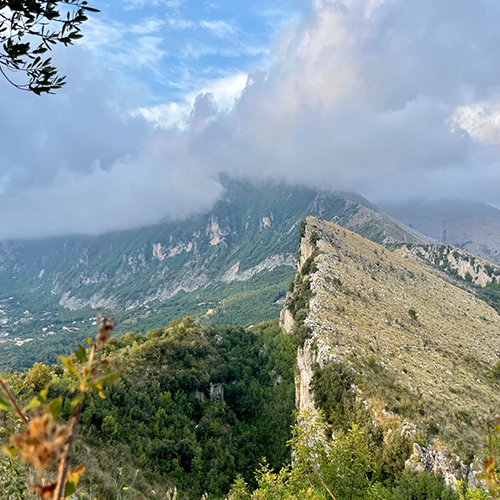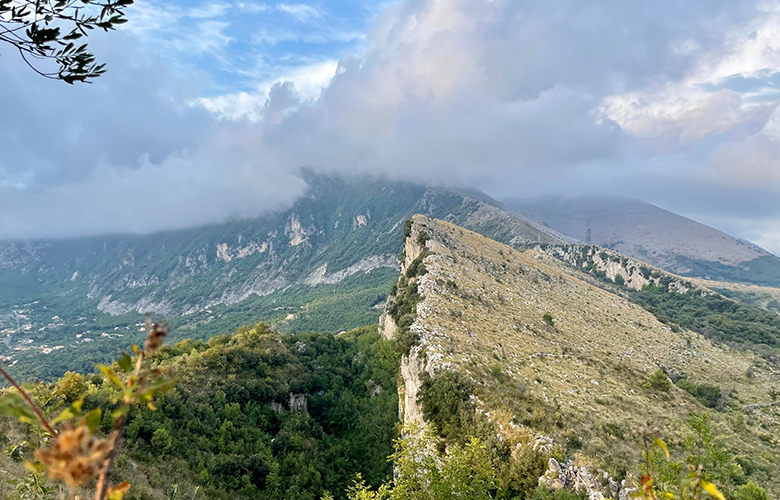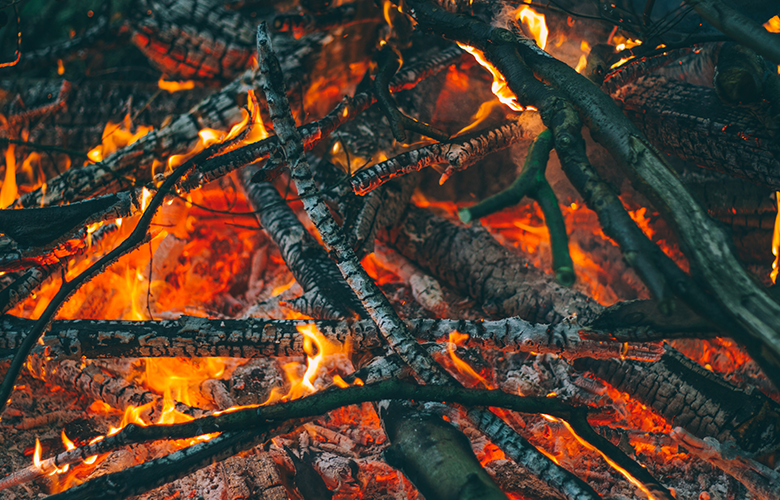
Wildfires raged on in Europe in the summer of 2022, contributing to carbon emissions and increasing the fear of shrinking carbon sinks. How exactly do climate scientists study wildfires? And what is it like to see the impacts of climate change up close? We interviewed Lucia Mona, Senior Researcher from an Italian atmosphere station that joined the ICOS station network in early 2023.
The CNR-IMAA Atmospheric Observatory (CIAO) observatory is an atmospheric station in Potenza, southern Italy, that has been providing observations of aerosol and cloud properties for two decades. The site had already been an important node of ACTRIS, and joined the ICOS station network as part of ICOS Italy in early 2023.
The station’s location in hot and dry southern Italy means it’s uniquely situated to measure wildfires that have become more frequent and destructive in recent years. In 2021, there was even wildfire within 1 km of the station – the results of which ended up in a recent research paper published in Remote Sensing. In 2021 the region, fortunately, did not experience any big fires due to southern Italy receiving more rain that year.
The year 2022 was in other ways quite exceptional. The campaign that the staff at CIAO station had planned to measure the wildfires in August 2022 moved focus to catch something else: a large cloud of desert dust from the Sahara, which was connected to the extreme local heatwave and made the skies near the station dark orange for four whole days. Similar desert dust had been detected at the station already earlier that year, in February and June.
“I have worked with Saharan observations since the beginning of my career”, says Lucia Mona, Senior Researcher at the CIAO observatory. “I don’t remember other such dramatic cases before this year.”

Small and local wildfires in focus
Wildfire characterisation is a process that examines the optical properties of aerosol particles. Using instruments like nephelometers, absorption photometers and general aerosol in situ instruments, researchers typically measure the particles' properties, absorption, and dimensions. Wildfires are usually short-term events that produce massive amounts of particles and gases transported to the atmosphere.
Even smaller fires have an impact. The group at CIAO station spent some time in their campaign looking into the impacts of small wildfires that start from people burning scraps in their fields.
“Local and small fires are interesting because they are not easy to include in the climate models and radiation budget estimations,” Mona explains. “Particles emitted by fires are typically considered as strongly absorbing particles so their impact on radiation budget is opposite to the greenhouse gases ones. Because research is focused on big forest fire events, the characterisation of emissions (gases and particles) for small fires is still poor. But since many small and local fires do happen, understanding their impact is important.”
Mona and her colleagues will look into the technical properties and radiation budgets of small fires in detail in the coming years – also as part of ITINERIS, a joint project with the Italian network of atmosphere stations that started in November 2022.

Scientists providing knowledge for decision-makers
Wildfires will continue to grow in number and size if not enough is done to slow down climate change. Measuring and gathering data from wildfires is important for understanding their impact.
“We as scientists provide tools for policy-makers to mitigate climate change, adapt to some of the changes already taking place, and make societies more resilient”, Lucia Mona says. “We provide knowledge and the policy-makers have to find a way to reduce climate change.”
The CIAO station will continue operations as a joint ACTRIS and ICOS station. Together ICOS and ACTRIS observations could provide valuable information for characterizing emissions of wildfires and their radiative forcing. These observations allow us to better understand the role of wildfires in climate change.